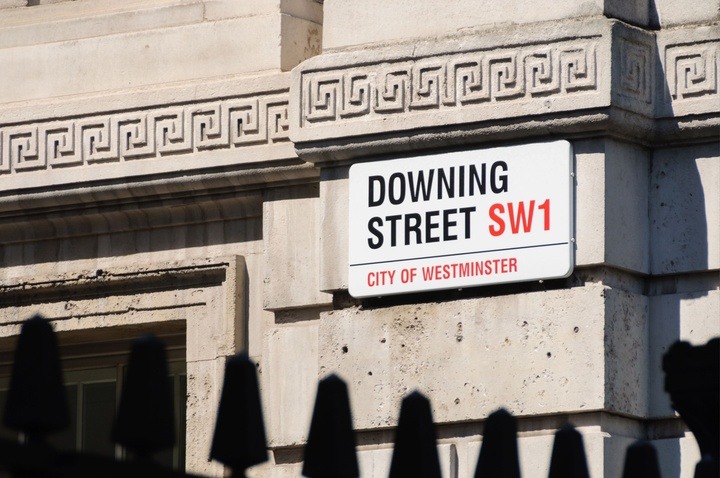Weekly Briefing: UK House Price Trends, Manufacturing Decline, Interest Rate Cuts, and Private Equity Reforms
In this week's briefing, we bring a plethora of recent finance and investment insights, from the latest interest updates to the state of the UK property market and private equity taxation.
We examine the recent slowdown in UK house price growth and its implications for the housing market, alongside a contraction in manufacturing driven by a shift in global demand. We also at today's Bank of England interest rate decisions, which could impact borrowers and shape future economic activity.
UK Property
House Price Growth Slows but a Surge May Be On The Horizon
- UK house prices grew by 2.4% in October, raising the average house price to over £265,738. This rate marks a slowdown from September’s 3.2% increase and came in below the predicted 2.8%.
- Despite slower growth, mortgage approvals approached pre-pandemic levels, with some banks like Santander lowering rates (0.36%) while others, like Virgin, raised them (0.15%).
- With the potential to revive house price growth, the Bank of England has reduced interest rates from 5% to 4.75%. This falls in line with the Office of Budget Responsibility’s (OBR) projection of a peak rate of 4.5% by 2027.
- Another potential driver of short-term growth is the temporary stamp duty threshold increase, that will end in March 2025, which could prompt a surge in transactions before April, as seen with past stamp duty changes.
- These changes to the stamp duty rate are predicted to impact up to 40% of first-time buyers, while increasing the rate for additional properties to 5% will affect about 194,000 transactions.
- “The main impact of the stamp duty changes is likely to be on the timing of property transactions, as purchasers aim to ensure their house purchases complete before the tax change takes effect,” said Robert Gardner, Nationwide’s chief economist.
UK Economy
UK manufacturing declines in line with weakening global demand
- The S&P Global UK Manufacturing PMI fell to 49.9 in October, indicating a slight contraction, as new orders dropped and optimism waned due to policy changes in the recent budget.
- The recent budget included a £40 billion tax hike as well as minimum wage increases, igniting some concerns about inflation, which may slow down expected Bank of England rate cuts.
- Input costs for manufacturers grew at their slowest rate this year due to lower prices for chemicals and metals, however, overall production and new orders decreased.
- This weaker demand was observed for both consumer and intermediate goods, with foreign orders also falling across Europe, China, and the US, it made clear that the UK is not the only one facing weaker demand.
- The BoE’s focus remains on high inflation within the services sector, although manufacturing’s slowed growth in costs could allow for policy flexibility.
- “UK manufacturing started the final quarter of the year on an uncertain footing amid speculation on government policies ahead of the Budget,” said Rob Dobson, director at S&P Global.
UK Interest Rates
BoE rate decision looming, expected to continue cuts
- Meeting every 6 weeks, the BoE’s Monetary Policy Committee announced its latest rates decision today.
- As previously said, it reduced its benchmark rate to 4.75%, following its first rate cut in four years in August, though inflation from recent budget spending may slow further cuts according to analysts.
- Thankfully UK inflation fell to 1.7% in September, below the BoE’s 2% target, while the OBR revised GDP forecasts higher for this year and next, projecting inflation to rise slightly to 2.6% by 2025.
- Contribution to increased GDP projections is the government's increased spending on the NHS and other departmental budgets, leading the OBR to adjust its five-year forecast for interest rates and gilt yields upwards by over 0.25%.
- “The bank finds itself with room to cut rates,” said George Buckley, an economist at Nomura, confident in his expectation of quarterly cuts over next year.
UK Private Equity
Carried Interest Reforms Aiming for Further Alignment with Income Tax
- The UK will increase the tax on performance fees (carried interest) for private equity fund managers from 28% to 32% starting in April 2025, with further changes planned for 2026 to align it further with income tax.
- The private equity industry campaigned against this larger increase, arguing that higher rates might lead to talent relocation abroad, while critics argued that carried interest should be taxed as regular income.
- Only about 3,100 people in the UK currently pay carried interest, a figure which represents high-earning private equity executives who invest mainly on behalf of their clients.
- Apart from carried interest, future reforms are planned, including potential requirements for co-investment obligations and extended holding periods for assets, with consultations to be held soon.
- “It is welcome that the government has listened to our arguments on the value of the private capital industry,” said Michael Moore, chief executive of the British Private Equity and Venture Capital Association (BVCA).
Final Note
This week’s briefing focused on the mixed signals from the UK housing market and broader economic indicators, highlighting both opportunities and challenges.
While house price growth has shown signs of slowing, the potential for growth remains, especially with recent interest rate cuts.
In contrast, the recent dip in manufacturing PMI underscores the need for these businesses to adapt to fluctuating global demand presenting a tough situation in combination with the recent business-focused budget.
With sector reforms on the horizon for private equity, in addition to the recent tax increases, fund managers may be prompted to adjust their investment strategies.
Overall, while the current environment poses certain risks for many, the opportunities presented by a more favourable interest rate climate and government support initiatives could lay the groundwork for renewed growth in the UK economy. Investors will need to remain agile, ready to capitalise on these potential shifts as they navigate the evolving market landscape.
%20(3)%20(2).jpg)







